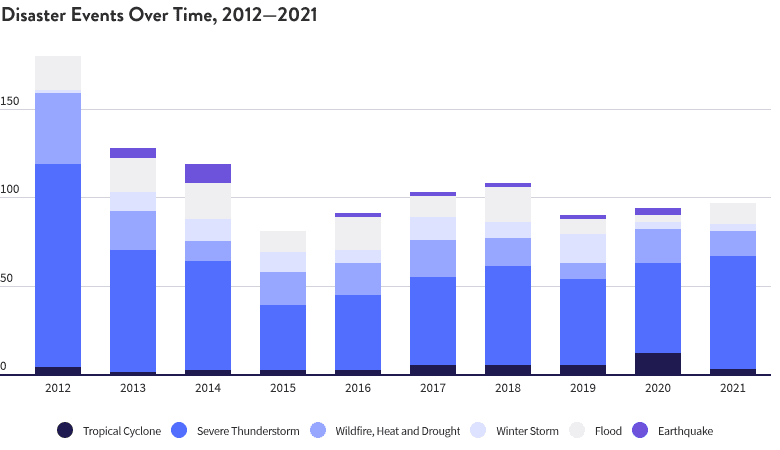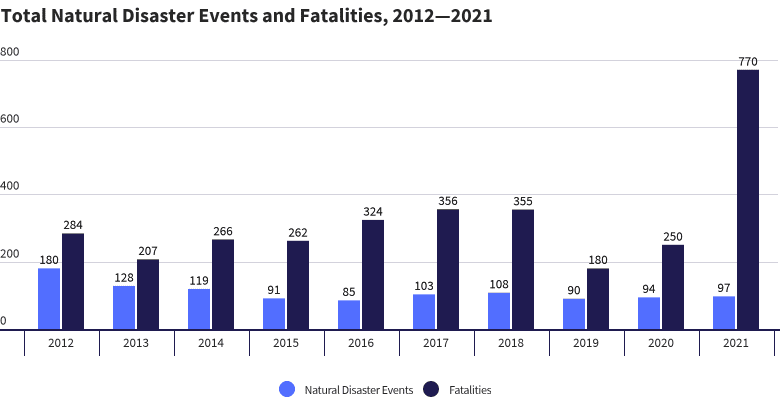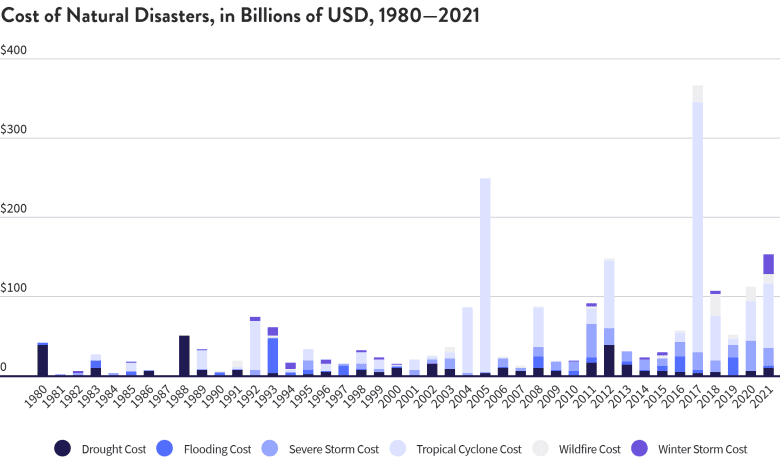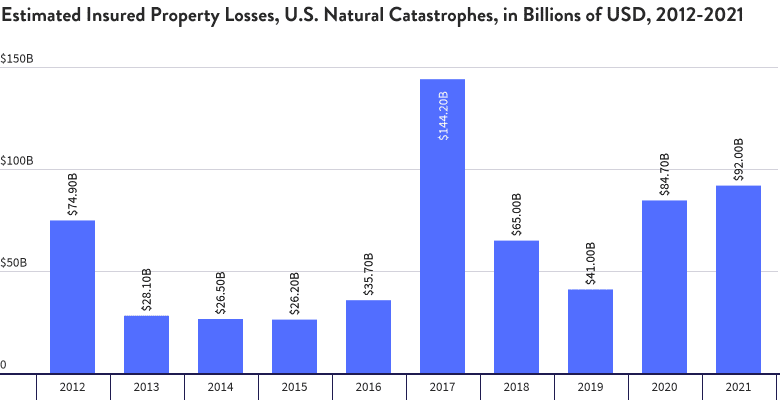The US saw 97 natural disasters as of 2021. These natural disasters caused around 770 fatalities in the same year. These range from different perils such as severe thunderstorms, wildfires, flooding, winter storms, and tropical cyclones. A natural catastrophe, or natural disaster, is an extreme event that originates from environmental factors, such as tornadoes or earthquakes. However, not all natural events count as disasters. For an event to qualify as a natural catastrophe, the event must cause insured property losses of at least $25 million, ten deaths, 50 injuries or 2,000 claims.
Understanding natural calamities and their frequency are vital, as knowledge can help you prepare for the worst. Purchasing homeowners insurance and making an emergency exit plan are some of the better-informed decisions you can make to help mitigate natural catastrophes' damages.


























